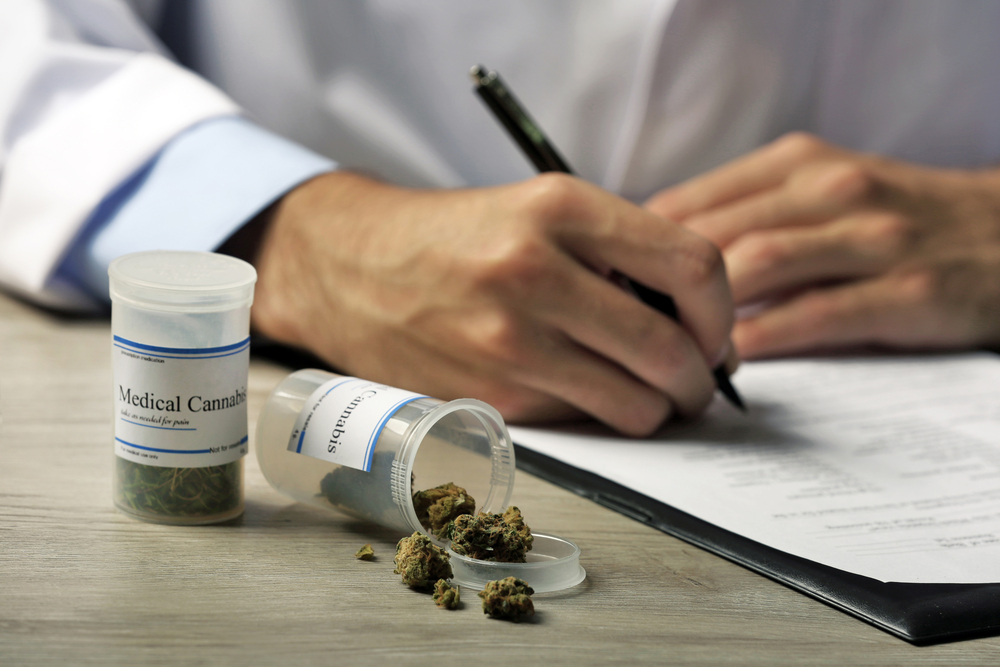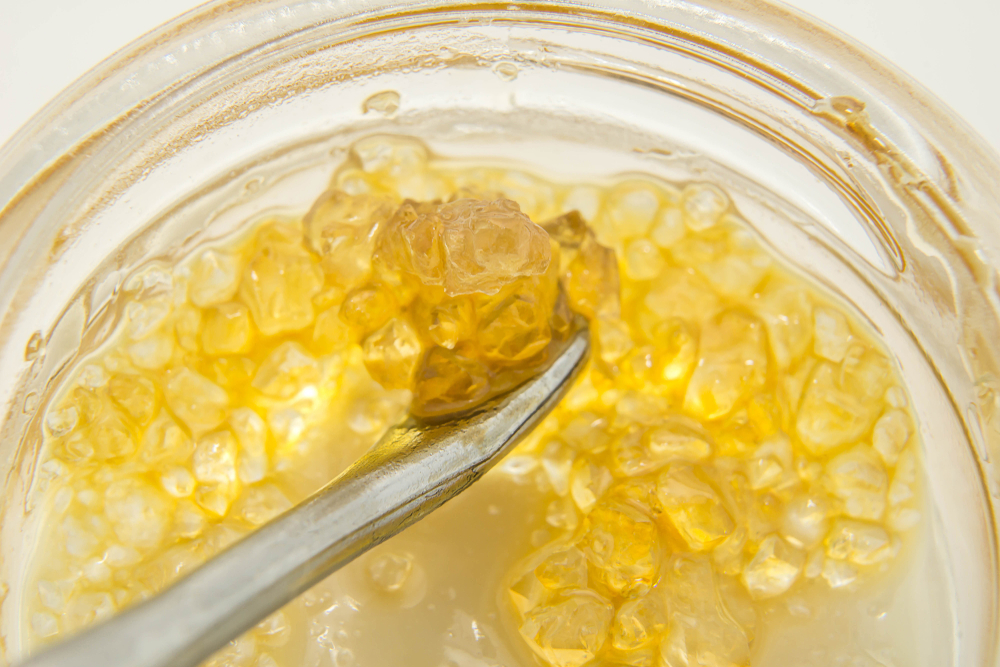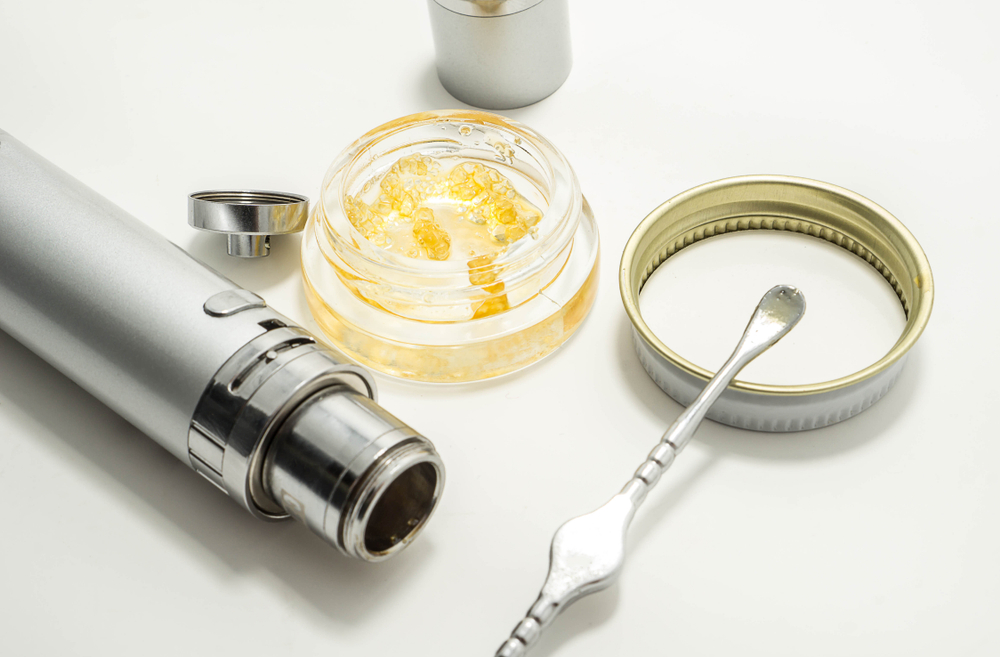Most tokers are more than familiar with the tantalizing temptress THC, but what about its close cannabinoid cohort THCA?
While it may seem like THC is the star of the sativa show or the inspirational instigator of your favourite indica, THCA is actually the most abundant cannabinoid found within the cannabis plant.
While most seasoned blazers are already conscious of this fact, for all you newbies out there, allow us to blow your minds…ready?
Raw cannabis plants actually don’t have any THC in them at all!
While you may think that you could simply pick up a freshly harvested bud and use it to get high, you’d be sorely disappointed.
That’s because raw cannabis plants that haven’t been appropriately cured and dried won’t contain any of the psychoactive compounds, including THC, that produce those types of effects.
So, in other words, popping a fresh nug of raw cannabis into your mouth and chomping down isn’t going to get you stoned.
Why is this, though? Well, it comes down to the curious cannabinoid THCA!
What is THCA? The Difference Between THCA vs THC
Much like how THC stands for tetrahydrocannabinol, THCA is also a shortened code name for a more extended scientific title.
However, in the case of the latter, THCA stands for tetrahydrocannabinolic acid.
While it may seem like just a subtle change, the extra ‘A’ makes all the difference when it comes to why one gets you high and the other doesn’t.
Essentially, tetrahydrocannabinolic acid THCA is the acid form of THC.
This means that the two compounds share several similarities because they fundamentally comprise the same core components.
That said, they aren’t 100% identical.
Much like eyebrows, THCA and THC are sisters, not twins!
In terms of their chemical makeup, the only real difference between these two cannabinoids is the addition of an extra carboxyl ring (COOH). It may seem like a tiny, unimportant trait, but it makes a huge difference!
This small carboxyl ring on a molecular level is the sole reason why THCA is completely non-reactive.
In simpler terms, it’s the culprit behind why THCA won’t get you high.
As such, users must convert THCA into THC to produce their desired effects.
How do you do this, you may ask? You’ve likely been performing the act all along. You just weren’t aware of it!
How Tetrahydrocannabinolic Acid Converts to THC

As we said, you’ve likely performed this process before, even if you didn’t know it. If you’ve ever sparked up a joint, blunt, or bowl, you’ve absentmindedly completed the conversion of THCA into THC.
Let’s take a step back to explain what we mean.
THCA is a “precursor” to THC, meaning that, while it’s not psychoactive in its natural state, there are things you can do to convert it into its cannabinoid counterpart. The process for doing so is called decarboxylation.
Before you get intimidated by this fancy-sounding term, the concept behind decarboxylation is incredibly straightforward.
The curing process for weed converts THCA and a bunch of other cannabinoids, including CBDA (the non-reactive form of CBD). Curing weed also breaks down the chlorophyll present in the cannabis plant, ensuring that it is free of mould and other contaminants.
However, curing weed alone is not enough to get you high!
When THCA is exposed to heat, it loses its extra carboxyl ring, thereby “activating” the THC within your weed, allowing it to produce those psychoactive effects we all know and love.
Smoking a joint, hitting a bong or using a pipe are all ways you can decarboxylate cannabis to get high.
So, curing is the first step of the decarboxylation process, but it’s exposing the cannabis to heat that does most of the work!
That said, if smoking is not your thing, and you’d like to be able to indulge in the righteous effects of THC without exposing your lungs to potential adverse side effects, Pyro Vape Pens pose a plausible and health-conscious solution!

Pyro THC Distillate Vaporizer Kits are a fantastic smoke-free alternative containing premium THC distillate and reintroduced strain-specific terpenes to provide a high-quality taste and experience without the need for combustion.
Instead, the vaporizer will heat the distillate to the optimal temperature, allowing users to inhale vapour rather than smoke, providing a smoother, safer ingestion option while also being sleek and discreet!
What are the Benefits of THCA?
Before you go thinking that THCA is entirely useless in its own right, we’re here to show you that it’s not without its merits!
In fact, according to research, there are several benefits of THCA despite it not producing any psychoactive, recreational effects.
Below, we’ll highlight some of the most noteworthy benefits of THCA.
THCA as a Pain Reliever and an Anti-Inflammatory
According to scientific evidence, THCA is shown to have anti-inflammatory properties that effectively fight and prevent inflammation and cartilage damage on joints.
These qualities are helpful and show great promise for treating chronic inflammatory diseases, such as rheumatoid arthritis.
According to a recent study published in January 2021, THCA was also shown to reduce liver fibrosis and inflammation in mice.
Additionally, THCA has also been found to be an effective analgesic. For those unfamiliar with the term, it means that THCA can also help treat mild pain.
THCA as a Protectant Against Neurodegenerative Diseases

Evidence published in the British Journal of Pharmacology in 2017 posits that THCA possesses neuroprotective properties.
More specifically, THCA may act to potentially protect against neurodegenerative conditions, including Parkinson’s, Prion and Alzheimer’s disease.
On top of that, according to research published in the same journal in July 2020, THCA also supplied “significant improvements” in an acute 3-NP model of Huntington’s disease in hindlimb dystonia (uncontrollable hindlimb muscle contraction) and locomotor activity in male mice.
THCA as an Inhibitor of Cancer Cell Growth
As if the above benefits aren’t enough, preliminary research also posits that tetrahydrocannabinolic acid THCA has the potential to possess antiproliferative (used or tending to inhibit cell growth on tumour cells) on cancer cell growth.
Additional evidence supports these claims, demonstrating that THCA proved to effectively hinder the growth of breast cancer cells in vitro and lab testing.
Furthermore, THCA has also proven successful in reducing nausea and vomiting, two of the most common side effects of chemotherapy.
How to Reap the Benefits of THCA
If you’d like to reap the benefits of THCA in raw cannabis without toking up, there are several methods for doing so. We’ll highlight some of the most common and easily accessible below!
Buy High-Quality Cannabis
High-quality weed has high amounts of THC, but you have to decarboxylate it first, of course!
Uncured and raw cannabis will have significantly higher concentrations of THCA than cured and dried weed. So, if you can find a dispensary that hasn’t cured their stock yet, that’s your best bet.
If you’d like to try your hand at developing a green thumb, you can also experiment with growing your own cannabis and leave it uncured.
For more information on how to grow cannabis, check out our helpful guide here.
THCA Diamonds

If you’d like a more direct approach without finding uncured dry cannabis buds or growing your own, THCA diamonds are also an option.
These diamonds, also known as THC crystals or THC diamonds, are cannabis concentrates in crystalline forms containing 99% THCA. If you’re wondering what the leftover 1% is, it consists of terpenes and other cannabinoids.
These extracts are created similarly to other concentrates, including shatter, live resin, and other products made using butane hash oil, except that some of the original solvent is left, producing a supersaturated mix of THCA.
Producers gradually remove the leftover solvent over time, which allows the THCA to collect and crystallize.
THCA diamonds are a relatively new variation of cannabis concentrate that is quickly gaining popularity.
Juicing Raw Cannabis
If you’re looking for a simple and accessible method to ingest THCA, all you’ll need is some raw cannabis buds and a blender.
With this method, you can throw the stems, trims and leaves of uncured weed and blend it all up to make a smoothie. Raw weed that has been through the blender can act as a dietary supplement to supply a wide range of benefits.
In this way, you can have a green smoothie that contains all the benefits that contain all the therapeutic properties that THCA has to offer.
THCA – THC’s Terrifically Talented Counterpart
We all love reaping the benefits and fun-loving psychoactive effects of THC (responsibly, of course!).
Still, if you’re looking for a method to enjoy the therapeutic properties of raw cannabis, THCA supplies a wide range of health-oriented benefits!
As we’ve discussed throughout this article, there’s far more to THCA than simply being THC’s non-reactive cannabinoid counterpart. It also possesses neuroprotective, anti-inflammatory, analgesic and even cancer-fighting properties.
With this in mind, THCA is a star in its own right that has only just begun to shine throughout the cannabis community!


 No products in the cart.
No products in the cart.